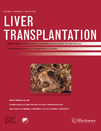The appropriate allocation of “orphan graft” in living donor liver transplantation: Simple solutions to a complex problem†
See Article on Page 428
The intra-operative death of a liver transplant recipient is a devastating complication that occurs very infrequently. When the deceased-donor liver transplantation (DDLT) candidate dies in the operating room, the appropriate disposition of the donor graft is relatively straightforward. If possible, the graft is allocated to the next available recipient. However, the intra-operative death of a liver donor liver transplantation (LDLT) candidate is a far more complicated situation. In this issue of Liver Transplantation, Nadalin et al. report four cases of intra-operative death of an LDLT candidate after the donor hepatectomy has been completed.1 In this situation, an hepatic lobe graft has been created that can no longer be transplanted into the intended recipient and is therefore designated as an “orphan graft.” The appropriate allocation of the “orphan graft” requires special consideration and raises several important questions.
HOW CAN THE TRANSPLANT TEAMS AVOID THE CREATION OF “ORPHAN GRAFTS”?
The simplest solution to the problem of “orphan grafts” is to avoid the situation altogether. The most effective means to prevent intra-operative deaths during a liver transplantation surgery is to have an experienced and technically proficient surgical and anesthesia team. Equally important, the transplant team must select LDLT recipients with a reasonable chance for a favorable outcome. Transplant candidates with medical problems that significantly jeopardize the likely success of the LDLT should, in most cases, be rejected for the procedure and relegated to DDLT.2 The selection of recipients for LDLT must be more stringent than DDLT because of the involvement of the living donor who, by definition, is a healthy patient who has volunteered for removal of more than one half of the body's largest organ. Because of the risk undertaken by the living donor, the transplant team must select appropriate recipients for the procedure. While there may be sporadic cases of intra-operative deaths in LDLT candidates, we believe that the occurrence of four such events at a single program should warrant critical re-evaluation of the intra-operative and anesthetic techniques as well as careful review of the center's recipient selection criteria.
Abbreviations
DDLT, deceased-donor liver transplantation; UNOS, United Network of Organ Sharing.
DURING THE DONOR HEPATECTOMY IS THERE A POINT BEYOND WHICH THE SURGERY CANNOT BE SAFELY TERMINATED?
In a LDLT operation, the donor and recipient surgeries are usually synchronized so that the recipient receives the graft immediately following the donor hepatectomy. By coordinating the donor and recipient surgeries, both patients receive the least amount of operative time and the cold ischemic time of the donor graft is minimized. In certain circumstances, the donor surgery may be delayed until there is complete assurance that the recipient transplantation may be successfully completed. This most commonly occurs in recipients in whom there is significant concern about the presence of extrahepatic carcinoma.
However, as reported by Nadalin et al.,1 the recipient may die intraoperatively during some phase of the donor hepatectomy, creating an “orphan graft.” If the recipient death occurs during the initial phases of the donor hepatectomy [prior to transection of the bile duct(s)], then the surgery may be terminated with minimal risk for long-term complications in the donor. Such an “aborted” donor surgery. i.e, a donor hepatectomy that concludes without the removal of a hepatic lobe, likely occurs in fewer than 5% of donor surgeries. However, if the donor operation has progressed to the point that the donor bile duct(s) have been transected, the hepatectomy should be completed. Attempts at intraoperative repair of transected bile ducts are more likely to result in chronic biliary injury than if the hepatic lobe is removed. As noted above, every attempt should be made so that prior to transection of the donor bile duct(s) there is assurance that the recipient transplantation may be successfully completed to minimize the risk of creating an “orphan graft.”
WHAT IS THE MOST APPROPRIATE PROCEDURE FOR THE ALLOCATION OF AN “ORPHAN GRAFT”?
The allocation of the “orphan graft” is simple: either the graft is discarded or implanted into another recipient. To discard the graft would seem wasteful. Consequently, consideration should be given to allocating the graft to another patient. However, the intentions of the donor must be a primary consideration. Unlike a deceased-donor, the living donor is making a directed donation to a specific patient, namely, the now-deceased recipient. Therefore, the criteria for a directed donation may be applicable in this situation. The United Network of Organ Sharing (UNOS) guidelines for directed donation stipulate that the donor or donor's representative may stipulate specific demographic criteria of the recipient. Therefore, the most sensible solution to for allocation of the “orphan graft” is as follows: 1) During the donor evaluation process, a contingency plan should be developed in the unlikely event that an “orphan graft” is created during the LDLT operation. 2) In accordance with the UNOS regulations for directed donation, the wishes of the donor should be recorded and fulfilled if an “orphan graft” is created.
In summary, creation of an “orphan graft” is a very uncommon but important occurrence in the LDLT operation. We believe that these grafts should be utilized if approved by the living donor in accordance with the UNOS guidelines for directed donation. However, every effort should be made to avoid this situation. Centers where “orphan grafts” are recurrently created should critically review each case to determine if changes in surgical technique, anesthesia procedures, or recipient selection can be made to avoid further intra-operative deaths that are, in fact, extraordinarily rare at most LDLT centers.




